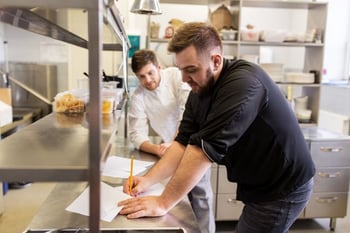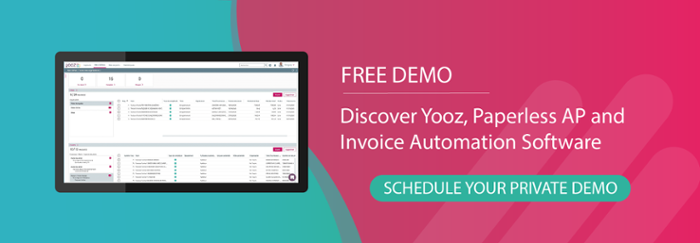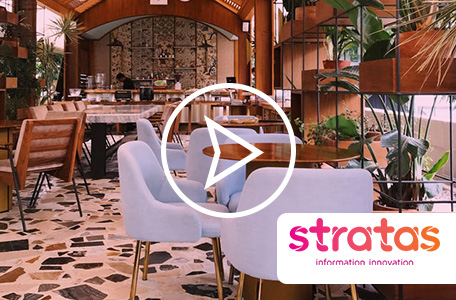Professional food preparation is both a craft and an art. In fact, it can be so difficult - dependent on multiple, constantly changing factors - that technologists continue struggling to teach robots how to do it. Since all the steps until a dish is ready to be plated require complex bimanual skills, scientists recently reported that they had to use human demonstrations to help a new robot learn to cook a stir-fry.
Chefs, on the other hand, excel at this kind of complicated multitasking. Yet running a successful restaurant comes with many other, more mundane tasks that call for complex workflows beyond the stove. Vendors need to be selected, orders placed, inventory tracked and replenished to accommodate changes, invoices processed and paid, staff hired and hours tracked, and finally the books need reconciled on short cycles to get an accurate view of the health of the business. This an area where robots can be of great help.
Software for automating the restaurant invoice management process lets a restaurant streamline its back-office accounting operations. This accounts payable automation platform will eliminate the repetitive manual tasks, reduce or even eliminate mounds of paper, and even more the entire payable process into the cloud. Automation cuts down on errors, mistakes, and delays letting chefs focus more on the creative side and on growing their business, keeping both their suppliers and their guests happy.

Why restaurant face unique invoice processing challenges
The hospitality business in general and restaurants in particular differ from other industries in that its defined by high velocity turnover, short payment cycles, and seasonal fluctuations that determine what goes into the pan and onto the menu. Chefs need to manage dozens of vendors who must reliably restock inventory, often daily in multiple locations. Just one small disaster - weather related, delivery issues, or more - can result in a missing product requiring a shift in the entire menu. What’s more, staff expect to be paid in short intervals, including proper accounting of tips. Hiccups like a misplaced invoice, mistakes in payroll, or delivery gaps can wreak havoc with a business plagued by thin margins and fickle tastes.
It’s clear why there must always be optimum daily visibility into the rolling boil of purchase orders, delivery receipts, and invoices. This is one of the benefits of automation; a system solution that's purpose-built to capture all documents quickly and reliably will process invoices all the way through payment with as little human intervention as possible. It can make the difference between scraping by or getting ahead.
Unique restaurant invoice management challenges aside, automated invoice processing follows a simple recipe for success. It consists of five steps that reduce the need for manual processes, saving time and money and creating resilience for the entire company.
Click and done: the ease of automation
Step One: Thanks to multichannel capture, all documents (regardless of their format) are ingested by the system the moment they come in. This is where a cloud-based platform such as Yooz has the decisive advantage, having "seen" millions of different purchase orders and invoices from thousands of vendors that give it a large training set to power automatic capture.
Step 2: Robotic Process Automation (RPA) and Machine Learning (ML) algorithms extract and compare all important information from each document, from invoice number and items delivered to due dates, bank, and tax information. The data is indexed and securely stored in the cloud, accessible with a simple keyword search. Since manual entry is no longer required, the error rate associated with a manual payable process noticeably drops, reducing the risk of false or duplicate payments that might previously have slipped through.
Step 3: If the information in Step 2 matches up, invoices are routed down the line for either approval. If something doesn't match up an alert is sent for further action to review and solve any exceptions. With Yooz this process is customizable; each restaurant can set up the workflow that fits their specific needs. For example, channeling all food invoices straight to the chef or expediting recurring invoices for fast-moving items like bread or produce for automatic payment.
In addition, approval can be done from anywhere on a mobile device, such as when the owner or chef only has their tablet or smartphone handy while taking stock of the day’s deliveries or going over the next few days’ reservations. Or the approver can change with just a few clicks. It’s a flexible process with multiple features that adapt to each restaurant’s particular ebb and flow.
Step 4: Once invoices are approved then comes payments. This can either be handled through the automation platform partner or internally.
Step 5: The final step in the invoice processing workflow is sharing information to an organization's financial software. Once invoices are paid, the system will export data to the organization’s financial software and reconcile it with the purchase orders. This means that when the books need to be closed every night, right after the team finishes with clean-up, smart automation translates into a restaurant operator's peace of mind.
Moving on up to digital kitchen with invoice processing software
Invoice automation pays off almost instantly. Processing costs per invoice drop by 80% and cycle times shrink to days or even hours. Speed also translates into no more late fees, keeping vendors happy as invoices are paid on time. This in turn improves the business/supplier relationship, and in the restaurant business loyalty is a key ingredient to make sure the shelves are always fully stocked.
In addition, all the data is in a centralized online (preferably cloud-based) storage. No more lost papers, no more lost information. Information about expenses, sales, and more is available with just a few clicks. No more manual inputs, no more month-end reconciliations. All possible thanks to technology.
Back to that robot struggling with a stir-fry. “Creating a robot chef in the semi-structured kitchen environment remains a grand challenge," admits one of the scientists involved. While we’re years away from robo-chefs and waiters, digitalization and automation have arrived in the hospitality industry. The first semi-smart machines are getting headlines for preparing burgers and pizza, while service robots already bus tables. Restaurants used the pandemic to experiment with various apps to streamline the entire dining experience, from order to payment.
Future fare: when the robots roam, chefs can focus on cooking
Today's reality is that regardless of the type of restaurant, whether a restaurant specializes in take-out and delivery or emphasizes sit-down meals, there needs to be a plan for a digital future. New robots and software will require additional investments in terms of time and money to track their performance and keep an eye on maintenance or upgrade needs.
Restaurant invoice management is simplified thanks to an end-to-end platform that keeps tabs on the entire workflow from purchase order to payment, bringing together all the bits of information in one place. Integrating AP automation into this process ensures accuracy and efficiency, freeing up time for more strategic tasks. And it’s a good starting point to rethink the business of making memorable meals.
Why not let the robots roam, so the chef can be more creative?

.jpg)





